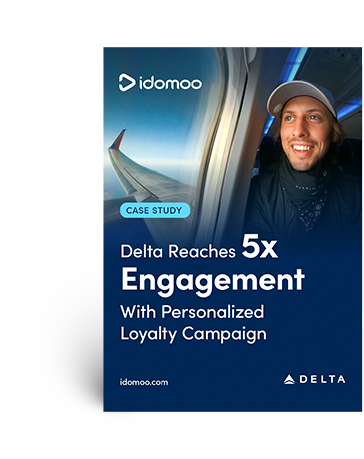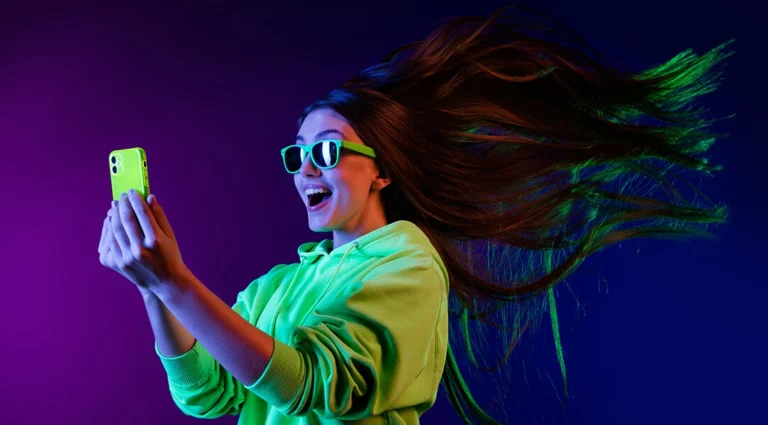Success in today’s consumer marketplace needs to extend beyond simply addressing your customer by name. Customers are craving more tailored experiences that are unique to their preferences and behaviors. After all, 75% of consumers report they’re more likely to purchase from brands that provide personalised digital experiences.
With advanced technologies and the ability to capture precise, real-time data, traditional personalisation has evolved into hyper-personalisation.
Through hyper-personalisation, businesses can anticipate what customers need and provide it to them when and how they need it. This digital transformation allows brands to connect with individual customers in exciting and innovative ways.
Ready to learn how your business can level up its customer experience? Join us as we explore the ins and outs of hyper-personalisation, discuss the benefits and analyse some of the best methods to incorporate into your customer engagement strategy.
Hyper-Personalisation, Explained
Hyper-personalisation is the most advanced method of creating unique customer experiences tailored to specific individuals in your target audience. Now that businesses have access to even more data, they’re leveraging it to gain a deeper understanding of customer behavior.
Post on
But hyper-personalisation goes beyond the traditional customer segmentation that leverages behavioral data and broad demographics. Instead, it’s customised to the individual — personal and relevant, sometimes even anticipating the customer’s needs.
Hyper-personalised content factors in a host of personal data — but (and this is key) only what’s relevant. Your bank might know your account balance, but they don’t need to send you an infographic showing it.
The good news is that in today’s crowded marketplace hyper-personalisation provides businesses an opportunity to connect with their target audience in a better way. Incorporating this strategy can both strengthen current customer relationships and bring in future customers.
Personalisation vs. Hyper-Personalisation
Personalisation is a digital marketing approach used to tailor content based on customer data. This can cover things like advertising segmentation or personalised recommendation such as the shows Netflix suggests based on your watch history (or another company might recommend based on browsing history). That’s personalised to some degree, but not 1:1 personalisation.
A common example from the world of email marketing is when a customer buys a specific product, they get an email with related product recommendations.
The term “personalisation” can also be used how we talk about it — unique to the individual, like this bill explainer below. As you’ll see when you watch, this customised content is only for Kristen.
While traditional personalisation (that isn’t 1:1) can help businesses boost sales, it falls short of delivering a better customer experience based on individual preferences and behaviors.
With today’s tech advancements, you can say goodbye to the old approach of traditional personalisation and welcome the new era of hyper-personalisation.
Hyper-personalisation can leverage dozens of data points to give customers a one-of-a-kind experience. While personalising content with just the first name is always a good place to start, many of our videos have more than 20 points of personalisation, making them truly hyper-personalised.
Through this in-depth personalisation strategy, businesses gain deeper insights into specific individuals’ interests, preferences and behaviors. With this wealth of information, brands can craft omnichannel messages and product recommendations relevant to specific members of their customer base.
Some of the best examples of hyper-personalised marketing include recaps or year-in-review campaigns. Spotify may be the most notable instance with their popular Spotify Wrapped campaign. However, Spotify isn’t the only company to understand the power of recaps.
Check out the video below to see another example of hyper-personalisation, this time from the gaming industry.
The Benefits of Hyper-Personalisation
Leveraging hyper-personalisation provides a range of opportunities for businesses and is equally beneficial for consumers.
Consumers love personalised experiences because the information is easier to understand since the content is more relevant. It also makes consumers feel like the brand values them more as an individual. In fact, 73% of consumers indicate their willingness to share data with companies in exchange for a more tailored experience.
For businesses, implementing hyper-personalisation marketing strategies has a whole slew of advantages.
- Boosts customer engagement: By prioritising your customers and truly tailoring your marketing messages to be unique, you increase the odds of them engaging with your content. After all, 72% of consumers say they’re more likely to engage with marketing messages that are personalised to their preferences.
- Reduces customer acquisition costs: When done properly, personalised content can reduce customer acquisition costs by nearly 50%.
- Increases conversion rates: By using automation tools that let you combine individual-level customer data with segmented data like past behaviors, preferences and interests, you can anticipate your customer’s needs. As a result, you increase the likelihood of boosting conversion rates.
- Maximises revenue: Businesses that invest in advanced personalisation strategies see a $20 return for every $1 spent. Additionally, McKinsey found that revenues can increase between 5% and 15% with personalised content.
- Elevates customer experience: Leveraging past behaviors and precise data to proactively recommend offerings with a 1:1 personalised touchpoint is a game-changer. It boosts customer satisfaction, customer retention and overall customer experience.
Elements of Hyper-Personalisation
While the strategies employed may differ depending on the industry, a few core foundational elements will help you achieve successful hyper-personalisation. Here are some of the tools you need to create unique customer experiences.
- Data collection: First and foremost, you can’t tailor unique customer experiences without precise data. The data collected can include demographics, purchase history, online interactions, sentiment analysis and more. This will allow you to better understand consumer behavior and patterns to deliver a bespoke experience.
- Personalisation platform: After you collect the data, you need to have the ability to connect that data to shareable content. Approaches may vary depending on your business, target audience and overall strategy, but a good example is through Personalised Graphics.
- Artificial Intelligence: Leveraging AI and machine learning tools enhances the creation of hyper-personalised content. By training AI on their content, brands can generate marketing materials at an unprecedented scale. However, it’s worth noting that while AI can be a valuable tool for hyper-personalisation, it’s not an absolute necessity.
Hyper-Personalisation Strategies
Hyper-personalisation is a useful tactic across multiple industries, offering brands a chance to differentiate themselves in competitive marketplaces. An astonishing 70% of businesses leveraging advanced personalisation strategies witness a surge in ROI, often exceeding 200%.
While there are several approaches to consider, let’s delve into some of the most effective hyper-personalisation strategies and explore how to integrate them into your campaigns.
Personalised Video
More than 80% of consumers have voiced their desire for more video content from brands, yet a mere 19% report regularly receiving such content. This disparity highlights a major opportunity to bridge the gap by integrating hyper-personalisation with the demand for video content.
Personalised Video is the ultimate customer experience solution, allowing businesses to deliver a unique experience for each individual based on precise, relevant data.
One of the main advantages of this kind of data-driven video is the ability to use it throughout each stage of the customer journey. Whether your goal is to increase engagement, provide bespoke product recommendations or boost sales, Personalised Video is an effective strategy.
Here is an example of how Personalised Video can help improve customer engagement.
Highly Contextualised Emails
While an omnichannel approach is the best way to reach and engage with audiences, email is the most preferred channel among modern consumers. With that said, that may vary depending on your business, audience and the industry as a whole.
Highly contextualised emails are a great hyper-personalisation strategy, especially for the ecommerce sector. Through the use of advanced algorithms combined with customer demographics, search queries, average time spent on searches, past purchase history, etc., businesses can tailor these personalised emails to send one-of-a-kind product recommendations.
This strategy aims to create unique experiences for each customer. As a result, businesses can see conversion rates of 35% or more.
Interactive Video
Video consumption is thought of as a passive experience. However, modern consumers want to engage with video content in more and different ways than ever. In fact, 93% of Gen Z are interested in receiving Interactive Video from brands.
What exactly does that mean? Consumers want to go beyond simply watching and commenting. They want content that is not only relevant to them but also interactive.
Interactive Video allows consumers to be at the center of the content. They’re able to engage and customise the video in real time, changing the outcome with their decisions.
This added functionality for video naturally boosts customer engagement. But it doesn’t stop there. Here are some of the results that can be achieved by implementing this strategy:
- 4x CTR
- 2.5x higher unique views
- 10x more conversions
- 26% higher video completion rate
Interested in seeing how Interactive Video works in action? Check out this customer service video below.
Real-Time Personalisation
Real-time personalisation is an effective customer engagement strategy because it uses the most up-to-date information on consumers to provide them with the most relevant information possible.
This strategy can be incorporated on the back end as well as the front end. What do we mean by that?
- On the back end, businesses can use the latest (i.e., just received) data to tailor content or recommendations in real time.
- On the front end, users can provide the information that is relevant to them and change the content in real time. An extra benefit here is that the business can collect data from not just user behavior but direct user input to further personalise interactions going forward.
Curious about how this works? Check out the video below and click the “lighting bolt” icon to see it in action.
Personalised Loyalty Programs
Personalised loyalty programs are one of the most common customer engagement and retention strategies businesses employ. That’s no surprise, considering 91% of consumers report that they’re more likely to engage with brands that tailor an approach based on individual preferences, behaviors and past purchases.
Let’s look at some of the best tactics to help turn your one-size-fits-all loyalty program into one that puts hyper-personalisation at the forefront.
- Customised rewards: By leveraging consumer data and advanced algorithms, you’ll have a better understanding of each individual customer. Equipped with that knowledge, you can tailor rewards like discounts on frequently purchased products or exclusive offers.
- Tiered rewards structure: One of the simplest ways to encourage engagement and retention is by incorporating tiered rewards into your loyalty program. To add a more hyper-personalised focus, businesses can adjust tier criteria based on specific individuals’ behaviors and overall engagement.
- Targeted communication: Consumers are inundated with promotional messages every day. A lot of messages get overlooked due to a lack of relevance. Similar to the tactics above, businesses need to consider how each individual customer interacts with the loyalty program to target communications properly.
Laugh and Learn With These 4 Personalisation Fails
We’ve only begun to explore the vast potential of hyper-personalisation strategies. As technologies continue to evolve and more data points become available, businesses will be able to gain a better understanding of individual preferences. Offering hyper-personalised experiences isn’t just a passing trend — it’s become a necessity to differentiate your business in today’s saturated consumer marketplace.
When executed effectively, hyper-personalisation has significant effects on customer engagement, retention, conversion rates and overall revenue.
As businesses try to integrate these strategies into their marketing campaigns, they inevitably encounter challenges along the way. Read about 4 times brands got personalisation wrong for insights on how to avoid the hall of shame.




